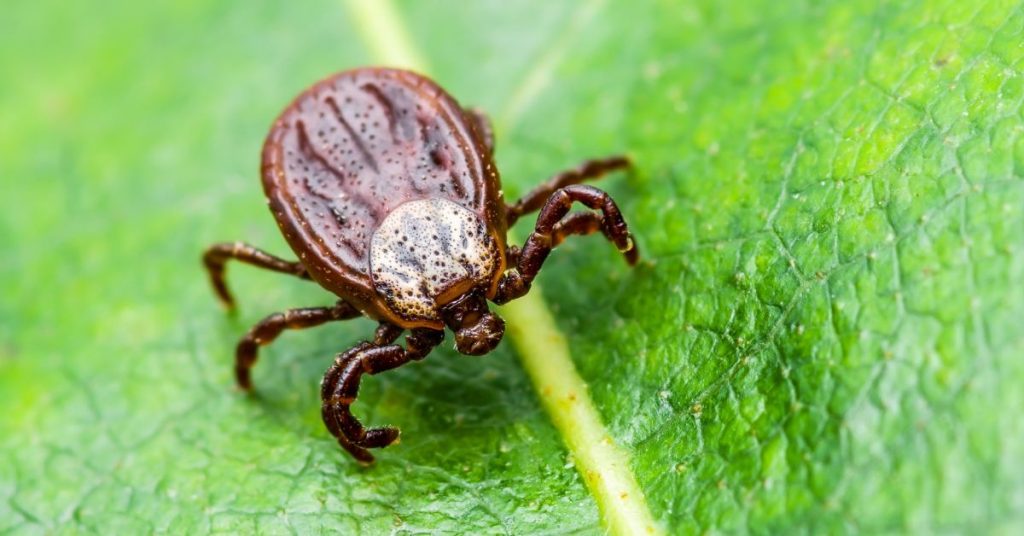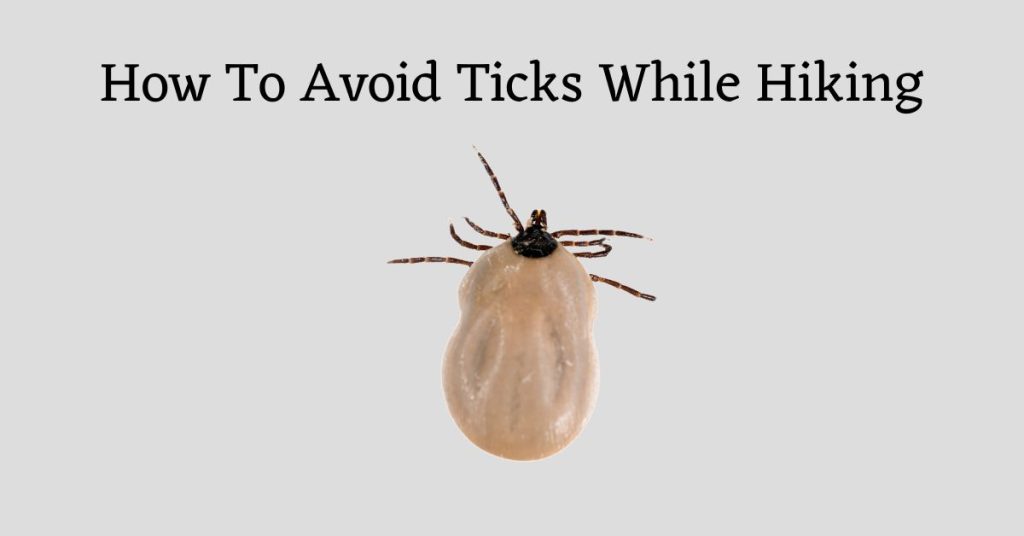A hiking adventure should be a journey of discovery, not an encounter with unwanted guests like ticks. In this post, we’ll look at essential strategies to ensure your outdoor experience remains free from these tiny but troublesome hitchhikers. From clothing choices to natural repellents, here are some practical tips to avoid ticks while hiking.
Understanding the Tick Life Cycle
Ticks undergo a four-stage life cycle, including egg, larva, nymph, and adult. Understanding this life cycle is crucial when it comes to avoiding these pesky creatures while hiking.
The first stage is the egg stage, where adult female ticks lay thousands of eggs in moist areas, such as leaf litter or tall grass. These eggs hatch into larvae, which are tiny and have six legs.
The larvae then seek out a host, often small mammals or birds, and feed on their blood. After feeding, they molt into nymphs, which have eight legs. Nymphs then find another host and feed again before molting into adult ticks.
Knowing this life cycle can help us take preventive measures. For example, checking ourselves for ticks after spending time in tick-prone areas, like wooded or grassy areas, can help us remove them before they have a chance to transmit diseases.
Identifying Tick-Infested Areas
You Are likely to encounter ticks in the following areas:
– Thick underbrush and tall grass: These areas often play host to ticks, lurking in the shadows, waiting for their next victim.
– Neglected trails and abandoned paths: These forgotten trails, devoid of human presence, become an inviting habitat for ticks. The thought of venturing into these secluded areas, where ticks roam freely, can create a sense of entrapment and vulnerability.

Choosing Tick-Repellent Clothing and Gear
When choosing tick-repellent clothing and gear, consider the level of protection they provide. Look for clothing specifically treated with permethrin, a synthetic insecticide that repels and kills ticks upon contact. Opt for gear made from tightly woven fabrics, as they provide an additional barrier against ticks.
It’s also crucial to choose clothing that covers as much of your skin as possible, such as long-sleeved shirts, pants, and high socks. Don’t forget to wear a wide-brimmed hat and tuck your pants into your socks for extra protection.
When it comes to gear, consider using a tick-repellent spray on your backpack, tent, and any other equipment you take with you on your hike.
Applying Tick-Repellent Sprays and Lotions
Applying tick-repellent sprays and lotions is a simple and effective way to protect yourself from ticks while hiking. These products create a barrier on your skin, making it less attractive to ticks and reducing the chance of them latching onto you. Here are some reasons why using tick-repellent sprays and lotions can be liberating:
– Peace of mind: Knowing that you have taken proactive steps to protect yourself against ticks gives you a sense of freedom and peace of mind while hiking. You can focus on enjoying the beauty of nature without constantly worrying about tick bites.
– Confidence: Using tick-repellent sprays and lotions can boost your confidence on the trail. You can explore off-the-beaten-path areas and venture into tick-prone habitats without fear, knowing that you have a layer of protection.
– Empowerment: Applying tick-repellent products empowers you to take control of your hiking experience. By taking preventive measures, you’re reclaiming your freedom to explore nature without the limitations imposed by ticks.
– Independence: With tick-repellent sprays and lotions, you can confidently hike solo, knowing you can defend yourself against ticks. This independence allows you to choose your own pace, routes, and destinations, without relying on others for protection.
Remember to always follow the instructions on the product labels and reapply as recommended to maintain their effectiveness.

Checking for Ticks During and After Your Hike
One important step is to regularly conduct tick checks during and after your hike to ensure you’re free from any unwanted hitchhikers.
During your hike, make it a habit to inspect your body every couple of hours, paying close attention to areas where ticks commonly latch on, such as your ankles, knees, waist, and armpits. Liberating yourself from ticks starts with being thorough and meticulous.
After your hike, don’t let your guard down just yet. Take a moment to carefully examine your clothing, gear, and any other items you brought along. Ticks are sneaky and can easily hitch a ride on your belongings, so give everything a good shake and inspection. Don’t forget to check your pets too, as they can also bring ticks into your home.
Removing Ticks Properly and Safely
I always use fine-tipped tweezers to carefully and safely remove ticks from my skin. Approach tick removal with caution and precision to minimize the risk of infection.
Here are some tips to help you liberate yourself from these pesky parasites:
– Be calm: Take a deep breath and stay calm. Panicking can lead to hasty and improper removal, increasing the chances of leaving behind tick parts or causing the tick to regurgitate into your bloodstream.
– Grasp the tick: Using the fine-tipped tweezers, grasp the tick as close to the skin’s surface as possible. This ensures a firm grip and reduces the risk of squeezing the tick’s body.
– Remember: The goal is to grip the tick’s head, not its body. Avoid twisting or jerking motions that may cause the tick’s mouthparts to break off and remain in your skin.
– Pull gently: With a steady hand, pull the tick upwards with a slow and steady motion. Avoid any sudden or forceful movements that may cause the tick to detach, leaving its mouthparts embedded in your skin.
Tip: If the tick’s mouthparts break off, don’t panic. Use the tweezers to remove them as well, ensuring complete extraction.
Preventing Tick Bites on Your Pets
Tick bites can lead to serious health issues for our furry friends, so taking proactive measures is crucial.
One of the first things I do is inspect my pets thoroughly after every outdoor adventure. I carefully examine their fur, closely examining areas where ticks are commonly found, such as the ears, neck, and underbelly.

If I find any ticks, I use tweezers or a tick removal tool to grasp the tick as close to the skin as possible and gently pull it out. In addition to regular checks, I also use preventative treatments recommended by veterinarians.
These treatments include topical solutions, collars, or oral medication that repel ticks and kill them on contact. It’s important to consult a veterinarian to determine the most suitable treatment for your pet, as different products cater to different needs.
I create a tick-free environment in my backyard to further protect my pets. This involves keeping the grass trimmed short, removing any leaf litter or debris where ticks may hide, and using tick control products in outdoor areas.
Recognizing and Treating Tick-Borne Illnesses
When hiking in tick-prone areas, it’s essential to be aware of the signs and symptoms of tick-borne illnesses and seek prompt medical attention if any symptoms arise. Tick-borne illnesses can cause serious health issues if left untreated, so it’s important to understand how to recognize and treat them.
Here are some signs and symptoms of tick-borne illnesses:
- Fever, chills, and body aches
- Fatigue and weakness
- Headaches and dizziness
- Joint and muscle pain
- Rash, often resembling a bull’s-eye
- Swollen lymph nodes
Seeking prompt medical attention is crucial:
– Early diagnosis and treatment can prevent complications.
– Delayed treatment may lead to more severe symptoms and long-term health problems.
– Don’t hesitate to consult a healthcare professional if you suspect a tick-borne illness.
As nature enthusiasts, safeguarding our outdoor experiences enhances the joy of exploration. The few simple precautions above will help you avoid ticks while hiking. By adopting these practices, you ensure that each step on the hiking path remains a step closer to nature, unencumbered by the nuisances of these tiny creatures.
Related:
How to Avoid Snakes While Hiking

